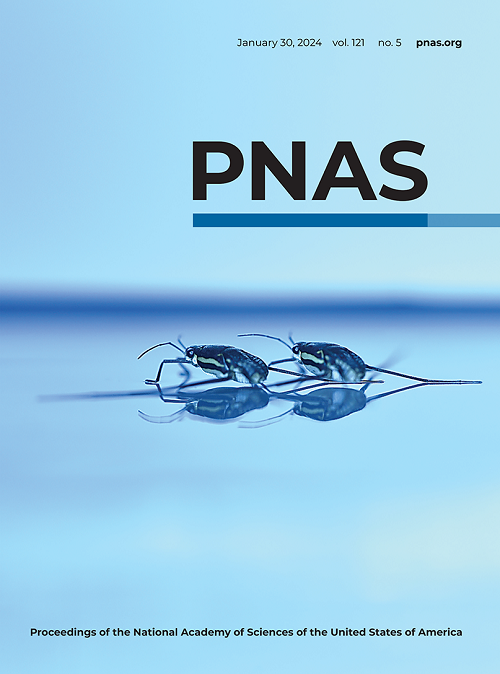Siderite and ferric oxyhydroxides imply interlinked carbon, iron, and halogen cycles on Mars
IF 9.4
1区 综合性期刊
Q1 MULTIDISCIPLINARY SCIENCES
Proceedings of the National Academy of Sciences of the United States of America
Pub Date : 2025-06-16
DOI:10.1073/pnas.2504674122
引用次数: 0
Abstract
Pure siderite [Fe菱铁矿和铁氢氧化物暗示了火星上碳、铁和卤素循环的相互联系
最近,好奇号火星车在火星盖尔陨石坑发现了大量的纯菱铁矿[Fe II CO 3](4.8 - 10.5%)。菱铁矿的成岩蚀变可能导致封存在碳酸盐中的二氧化碳释放回大气,从而产生铁[Fe(III)]氧合(氧化物)矿物。在这里,通过实验室实验,我们证明,虽然封闭系统的酸成岩作用(如Gale陨石坑所提出的)不能有效地改变火星相关流体中的菱铁矿,但卤素化合物(氯酸盐和溴酸盐)不仅可以在酸性pH下,而且可以在接近中性的火星相关溶液中风化菱铁矿。由此产生的氧化铁矿物受成岩流体组成控制。虽然光氧化是可能的,但蚀变的相互排斥的产物——紫外线照射下的磁铁矿(Fe 3o 4)和氧卤素产生的氧化铁(FeOOH)——表明盖尔陨石坑的菱铁矿经历了氯酸盐和溴酸盐的化学风化,因为在含有菱铁矿的钻孔样品中完全没有磁铁矿。我们提出了一个自上而下的氧卤水渗透模型来解释盖尔陨石坑富硫酸盐单元的铁矿物学。我们认为,仅靠酸性流体对菱铁矿的蚀变不能解释以前所发现的盖尔陨石坑沉积物中的氧化还原不平衡现象,而卤素卤水对菱铁矿的风化作用是最可能的解释。火星上的卤素循环极有可能与早期和现在火星上的铁和碳循环相互联系。
本文章由计算机程序翻译,如有差异,请以英文原文为准。
求助全文
约1分钟内获得全文
求助全文
来源期刊
CiteScore
19.00
自引率
0.90%
发文量
3575
审稿时长
2.5 months
期刊介绍:
The Proceedings of the National Academy of Sciences (PNAS), a peer-reviewed journal of the National Academy of Sciences (NAS), serves as an authoritative source for high-impact, original research across the biological, physical, and social sciences. With a global scope, the journal welcomes submissions from researchers worldwide, making it an inclusive platform for advancing scientific knowledge.

 求助内容:
求助内容: 应助结果提醒方式:
应助结果提醒方式:


